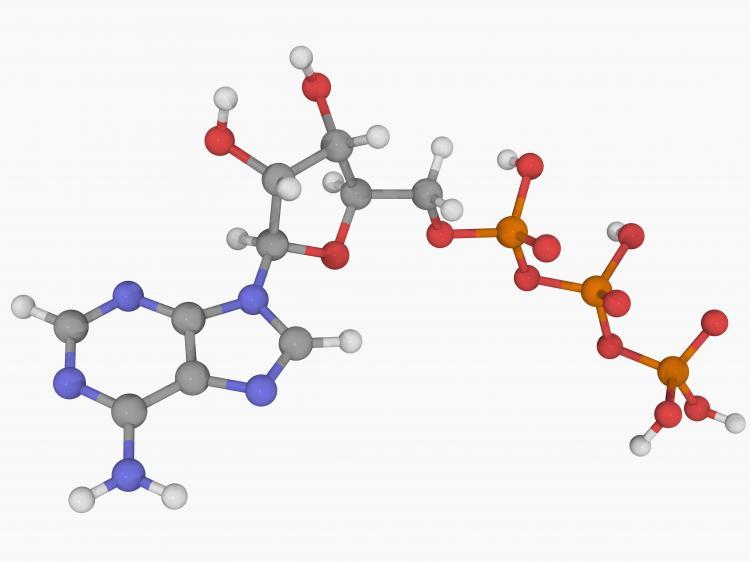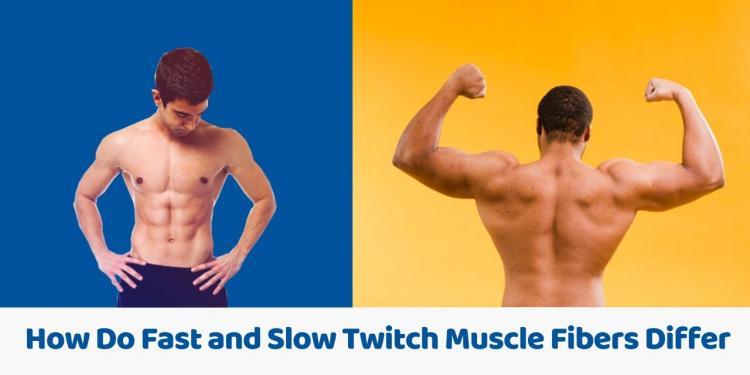There are several reasons why some people find it easier to take part in some sport activities than others. Besides interest, body shape, and the usual reasons we have for taking part in a particular sport, one interesting and very determining factor is genetics –specifically the makeup of the muscle fibers. Some people just find that it’s easier to run long distances than trying out any activity that involves quicker force like powerlifting or sprinting. And many times, this determines to a certain extent how far the individual can go in their chosen sport activity. A good understanding of the different types of skeletal muscle fibers will help you make better decisions concerning your athletic performance goals.
Difference between Slow Twitch, Fast Twitch Type 2A, and Fast Twitch Type 2B
Because of their slow contractility and a large amount of ATP being produced, Type 1 muscle fibers (slow twitch) can easily resist fatigue. They are focused on aerobic endurance and small movement activities. Some of these activities include distance running or marathons, swimming, cycling, endurance training, and power walking. So, most of the long-distance athletes you know most likely have more slow-twitch muscle fibers than any fast twitch fiber in their bodies.
Fast Twitch (Type 2A) Muscle Fibers are faster in contraction than Type 1 fibers, and as a result, they wear out more quickly than the Type 1 fibers. They are thicker and bigger muscles that don’t have the endurance level that slow-twitch muscle fibers have, and at the same time, don’t wear out as fast as Type 2B fibers do. They are also referred to as intermediate fibers and contain a decent amount of capillary density, mitochondria, and myoglobin. They tend to combine both aerobic and anaerobic metabolism to produce ATP at a moderately fast rate.

Fast Twitch (Type 2B) Muscle Fibers are the third type. They contract faster, have a larger diameter than both Type 2A and Type 1. They provide the most powerful force, but for the shortest period because they wear out quickly. They have very low capillary density, low level of myoglobin, and very little mitochondria. They have reduced blood supply which makes them appear white and are, therefore, also called white fibers. They have almost no aerobic cellular respiration and utilize anaerobic respiration for the production of low amounts of ATP. They are referred to as the super-fast twitch and are usually activated when the body reaches its peak of exertion.
The kind of activities that occur with type 2B fibers are short, fast, and impactful movements that result in easy fatigability.

Examples of these activities are short sprinting, powerlifting, jumping, and strength and agility training but at a shorter duration than the Type 2B can sustain.
Type 2A and type 2B muscle fibers are very similar and are ideal for very similar activities. In fact, Type 2 muscles can change within their own type with time.
MMA and other combat athletes make use of their Type 2 muscle fibers more than the Type 1 whenever they are in action. This happens because the activities (like boxing) require powerful and fast force that doesn’t need much sustenance.

Can You Turn Slow Twitch to Fast Twitch Muscle Fibers?
The simple answer to this is –yes. But as to how fast this can happen, or how much of your slow twitch muscles can become fast twitch, there’s no precise answer. Different people have different distributions of muscle fibers in their bodies, which means that there’s no exact formula and result that can be produced. The proper and safe way of growing a muscle fiber type is through a long period of exercising –that varies with each muscle fiber type. In reality, however, you may not be able to change all of your muscle fiber into another type. Age, the malleability of muscles, and intensity of training are some of the factors that may affect the outcome of these exercises.
The following is a workable routine to build your different muscle fiber types.
Building Slow Twitch Muscle Fibers
With what we have so far, training your fast twitch fibers to become slow twitch will be steadily developed through rigorous endurance training. This type of training involves low resistance, low intensity, long duration, and a high level of repetition. What happens is that over time, this training will work towards increasing the aerobic metabolism and grow more of slow twitch fibers. Switching from high-intensity strength activities may not be that easy for those that are already used to it. So, there’s the choice of taking endurance training, but at a high intensity for a while before switching steadily to low-intensity training. Some of these training include;
- Steady, but long treadmill sessions. Doing this while your attention is focused on some other interesting activity (like music or movies) is advised for beginners so you can stay longer on the treadmill,
- Long walks or slow but long runs
- Swimming bouts at the pool
- Bodyweight exercises or light weight lifting for longer periods
Focusing on endurance training for 6 to 8 months will increase the chances of developing slow twitch muscle fibers.
Building Fast Twitch Muscle Fibers
While endurance training will help you develop slow twitch fibers, more strength training will help develop type 2 muscle fibers. This training involves high resistance, high-intensity activities for shorter duration at periodic intervals. What these activities will achieve in the long run is an amplified capacity to generate force within the muscles. Also, taking part in resistance training increases the size of fast twitch muscles and makes its filaments increase in number. Tapering during training by reducing the intensity and volume of the activities can improve the power and strength of your fast twitch muscles. Some of these training include:
|  |
|  |
|  |
|  |
|  |
What Affects the Ratio of Slow Twitch and Fast Twitch in Your Body
While every person has a combination of slow twitch and fast twitch in their skeletal muscle makeup, we don’t all have the same ratio of fiber types in our bodies. As already stated, a number of factors will determine what muscle fiber type makes up a higher percentage of our biceps, intercostal muscles, muscles of the hand and other parts of the body. The two major determinants of your skeletal muscle fiber type ratio are your age and level of activity.
Age factor
The older we get, the more lean muscle mass we lose. This causes a decline in the fast twitch fibers of our body and an increase in the slow twitch fibers. We particularly lose our type 2B fibers because they work with metabolism, and our metabolic activities decrease with age.
Level of Activity
According to the Guyton and Hall Textbook of Medical Physiology, these are the typical ratios of fast twitch to slow twitch in the following types of people/athletes:
Type of Athlete | Fast Twitch % | Slow Twitch % |
|---|---|---|
Average male | 55 | 45 |
Marathoners | 18 | 82 |
Swimmers | 26 | 74 |
Weight lifters | 55 | 45 |
Sprinters | 63 | 37 |
Jumpers | 63 | 37 |
As for MMA, jiu jitsu, boxing, and athletes of other combat sports, the fast twitch to slow twitch ratio is somewhere between that of a weight lifter and a sprinter.
With all of these, we understand how important genetic makeup can be to professional athletes and the kind of activities they involve themselves in. It can help you rationalize your choices between what sports to get involved in. But then again, it’s worth noting that as important as it is, it’s not the only factor that can determine how good an athlete can get. An increased level of exercising (when it’s the right one) can help develop the fiber type that you need to succeed in your art. It’s worth noting at this point that it’s easier to switch from type 2 to type 1 fibers, or between type 2 fibers, than it is to change from type 1 to type 2 fibers.





